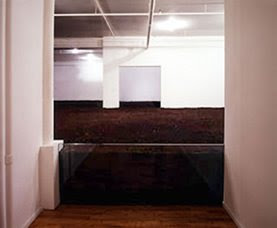

An idea I have for my installation is making wire birds and hanging them from a tree. I want to put in their bellies wind chimes so that they will "sing" when the wind blows. I was also thinking about putting a pipe perhaps in the birds' beaks so that people can blow through them and make sounds like a whistle. I think this is an uplifting idea that will be nice for the change of seasons to spring. I also like working with my hands and creating things that people can touch and hold. I will probably use copper wire and have not decided how to make the chimes or wind pipes yet (perhaps bamboo, metal, or glass?) An artist who uses wire to make sculptures is Elizabeth Berrien (above leaf and blue heron sculptures). She creates images of animals and plants and seems to be influenced a lot by nature. My project will be different from Berrien's because I do not think my birds will look exactly like a species of birds, it will be more interpretive. I am probably not going to use nice silver wire as she does, but use more hardy copper or a heavier metal since my birds will be hanging outside. I am also using some method of sound in my installation which is unlike Berrien's works.



